
The whirlwind reveal and showcase of the Switch 2 hardware and software was a complete blowout. So many ports! A brand new Donkey Kong game! The C button actually does something! Sure, there were some pretty big issues in the fine print, but I think there’s something that Nintendo massively undersold and didn’t even really talk about much until we got some hands-on time with the games.
How many people actually leave the rumble or vibration on? With the Switch, I think I turned it off long ago because I’m always worried about the battery life of the console or the Joy-Con. The Pro Controller is different, but I also have it turned off there. It’s just how it’s always been, and since controllers have largely gone wireless, that’s how I’ve always been. Apart from the haptics of the PS5 Dual Sense, which, poor thing, has been more susceptible to drift and quick-draining battery than any other controller I’ve owned in my life.
But when I picked up Mario Kart World for the first time at the Switch 2 Experience, and revved up my car as we were guided towards the starting line, I felt something magical in my hands. The traction of the wheels and the sound of my engine caused the Joy-Con and the system to buzz like it was a motor powering up, prepping to win the DK Spaceport race with me.

“But that’s perfectly normal, Alana,” you’re probably shouting. And you’re right, it is — I’ve played Mario Kart 8 Deluxe and other racing games where the controller vibrates when you get hit by an item or you make a backflip mid-air. But it’s more than that. Improved HD Rumble is here, and it’s glorious.
The only real mention of the new HD rumble comes from Kouichi Kawamoto, the producer of the Nintendo Switch 2, in a recent Ask the Developer interview. And even then, it’s only really to point out that it exists, and that it’s “stronger… feels more realistic, and has quicker response times.”:
“…you can’t tell just by looking at [the Joy-Con], but HD rumble 2 for Switch 2 has been changed to allow for a wider variety of vibrations. The HD rumble in the Joy-Con controllers for Switch was able to create different sensations of touch, but because of the size of Joy-Con itself, we weren’t able to make the vibration as strong as in the controllers for Nintendo GameCube.”
While the standard Joy-Con vibration is fine, it feels exactly the same as it does in much older controllers, at least in my memory. And when Sony and Microsoft have been making big strides with their controllers in recent generations regarding feedback, it was about time Nintendo joined the party.

I should acknowledge that the Joy-Con are very different from the Dual Sense of the Xbox controller — the Switch is a marvellous piece of kit and the Joy-Con are integral to that. But with the Switch 2 being an upgrade, Nintendo clearly understood the assignment – build everything from the ground up and make the necessary improvements to take things to the next level.
I might have noticed the traction and the buzzing in Mario Kart, but my first real wow moment with the rumble was while playing Metroid Prime 4
And more Switch 2 games I played — and the more of a ‘feel’ I got for the console, the Joy-Con, and the Pro Controller — the more I understood. I became convinced that the Switch 2’s new HD Rumble is the console’s best feature. It’s so good.
I might have noticed the traction and the buzzing in Mario Kart, but my first real wow moment with the rumble was while playing Metroid Prime 4: Beyond. Every single missile, jump, and collision with an enemy resulted in a different form of rumble or feedback in the Joy-Con. A charge beam will cause a steady vibration in the controller, while missiles are much more explosive when they hit a foe. The variety in intensity made me feel like I was actually Samus (albeit, a clumsy version of Samus), especially when paired with gyro or Mouse Mode.

First-party games were really where the rumble shone brightest, with Drag x Drive syncing the rumbling with your own motions. Dragging the wheels via Mouse Mode, similarly to Mario Kart, the tracking and spin of the wheels on the wheelchair brought with them a distinctive buzz in my palms that felt exactly like rubber tires straining against the floor to push my character forward. The motion and the vibration paired are just another way the immersion felt like some of the best I’ve experienced on a console.
Maybe my favourite use of the rumble was in Super Mario Party Jamboree, which was completely unexpected. One particular minigame, which I’ve talked about elsewhere, involved spray painting Bob-ombs. To refill the can, you have to pick up the Joy-Con mouse and shake it. And when you shake it, it feels like a little ball is inside the controller, rattling around, causing the controller to vibrate as you shake.
The haptics in PS5 games like Astro Bot and Final Fantasy VII Rebirth won’t be matched in controller feel on Switch 2, but there’s something to be said for the different levels of buzz as you punch through layers of dirt and stone in Donkey Kong Bananza. It actually makes me want to use the Joy-Con like boxing gloves more than Fitness Boxing ever did.

I suspect it will once again be Nintendo and its close partners using the Joy-Con’s HD Rumble to their advantage and mainly for games currently in development. I didn’t notice it in Split Fiction, for example, and it just felt like a normal vibration. And while Metroid Prime 4 is bringing the HD rumble to the forefront, during my time with Kirby & the Forgotten Land, Breath of the Wild, and Tears of the Kingdom didn’t seem to use the vibrate much differently than they did on the OG. It was stronger there, but not much else.
Having really only spent around 20 minutes max with most of these games, I’m excited to see just what Nintendo has planned for the rumble. It’s featured in Welcome Tour, naturally, so it’s clear it’s a part of the system the team is proud of.
And they should be. It’s got me pretty buzzed.
Discover more from Cave News Times
Subscribe to get the latest posts sent to your email.





















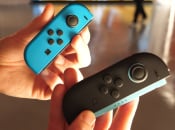

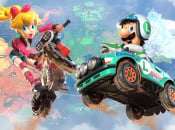
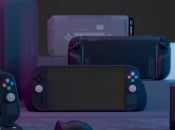
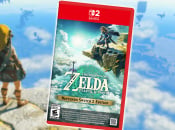
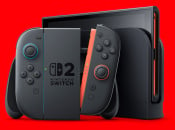









Discussion about this post